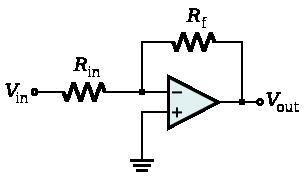Team:Valencia/Hardware
From 2009.igem.org
(→Experimental Set Up) |
|||
| Line 22: | Line 22: | ||
<!-- cite --> | <!-- cite --> | ||
| - | + | *<span style="color:black; align:justify; font-size:11pt; font-family: Verdana">'''Electrostimulation for yeast''' | |
| - | + | Our team has developed '''an electronic circuit''' capable of sending electrical impulses to yeast in a large range of voltages [0-100] V and high accuracy at the time of application of these, as they can reach a few milliseconds. As our initial design for neurons and muscles (which was more restricted in terms of voltages and powers), this circuit only serves '''to control a pixel independently''', but it can easily be '''controlled from any computer'''. | |
| - | + | In this circuit there are two well differentiated parts: '''the application part''', which highlights an adjustable voltage source and the electrodes through which we will stimulate our cells, and '''the control'''. | |
| - | + | Both are '''linked by an optocoupler''', which serves as the electronic switch. It consists of one LED (on the control) and a phototransistor (part of application), which lets flow current while the collector-emitter diode is lit. To stimulate the diode controlling the time of application accurately, '''we use the sound card''' (which has a high frequency) led by the "sound" Matlab function. | |
| - | + | But the nature of sound is sinusoidal and therefore also the tension leaves the sound card, and we need to incorporate into our circuit a rectifier-filter control, to ensure that our signal is as continuous as possible. Moreover, the tension that provides the sound card is insufficient to activate the optocoupler. This is the reason why we use two operational amplifiers, one as amplifier and another simply as a voltage follower. The amplifiers are powered by 5 volts and ground, so we will have 5 volts at the output of the operational when the sound card is active, and 0 volts when idle. | |
Revision as of 09:29, 17 October 2009
Experimental Set Up
[under construction. Feel free to read an article while its being developed]
Our team prides itself in finding ways to link electronics to biology in a direct and innovative fashion. As a consequence we spent considerable time developing circuits and equipment allowing for quick and robust control of cellular physiology.
- Direct electrical stimulation of cells
The first part of hardware design is an electronic amplifier capable of delivering range of voltages between 0 and 13 volts. It is based on an inverting amplifier (fig. 1). The input voltage comes from a sound card – a commonly accessible and low cost digital to analog converter. It allows us to control the waveform in an arbitrary fashion using a simple Matlab script.
The output is connected to platinum electrodes inserted into a buffer over either muscular, neuronal or yeast cells. We stimulate cells with delta-function pulses every second (or a few of them) to get continuous calcium influx. While muscular and neuronal cells respond to this kind of stimulus naturally, yeast will require some work. We hope that electrical stimulation of yeast could be obtained thanks to a heat-shock response (read more in modeling section) or reported calcium response to electroporation.
- Electrostimulation for yeast
Our team has developed an electronic circuit capable of sending electrical impulses to yeast in a large range of voltages [0-100] V and high accuracy at the time of application of these, as they can reach a few milliseconds. As our initial design for neurons and muscles (which was more restricted in terms of voltages and powers), this circuit only serves to control a pixel independently, but it can easily be controlled from any computer.
In this circuit there are two well differentiated parts: the application part, which highlights an adjustable voltage source and the electrodes through which we will stimulate our cells, and the control.
Both are linked by an optocoupler, which serves as the electronic switch. It consists of one LED (on the control) and a phototransistor (part of application), which lets flow current while the collector-emitter diode is lit. To stimulate the diode controlling the time of application accurately, we use the sound card (which has a high frequency) led by the "sound" Matlab function.
But the nature of sound is sinusoidal and therefore also the tension leaves the sound card, and we need to incorporate into our circuit a rectifier-filter control, to ensure that our signal is as continuous as possible. Moreover, the tension that provides the sound card is insufficient to activate the optocoupler. This is the reason why we use two operational amplifiers, one as amplifier and another simply as a voltage follower. The amplifiers are powered by 5 volts and ground, so we will have 5 volts at the output of the operational when the sound card is active, and 0 volts when idle.
This design only allows for stimulating one channel at once. While it is useful for proof-of-principle experiments, if we want to make a working screen, we will need an array of electrodes connected to a multiplexer. We are currently developing a device capable of stimulating tens of pixels at once.
 "
"
